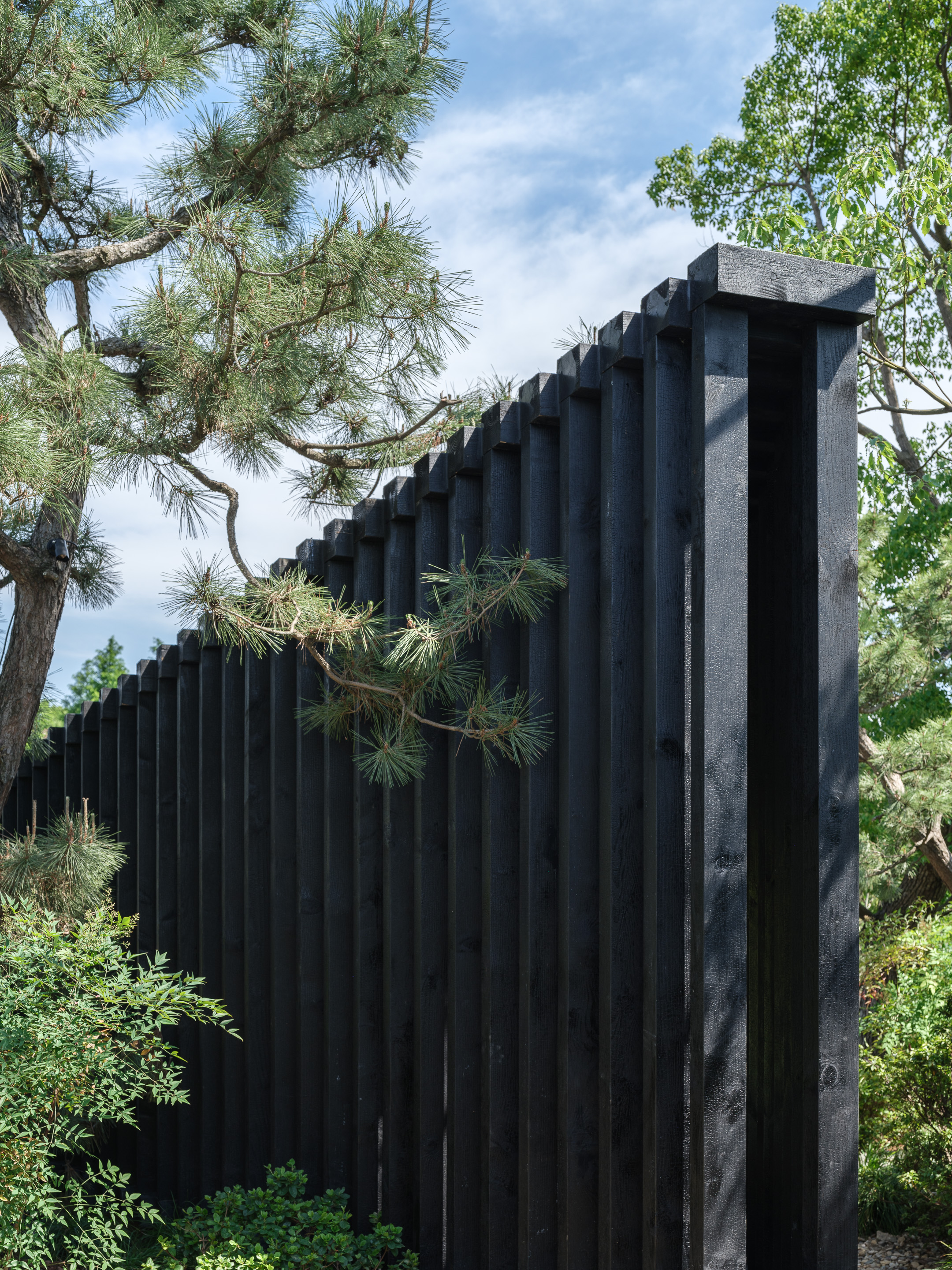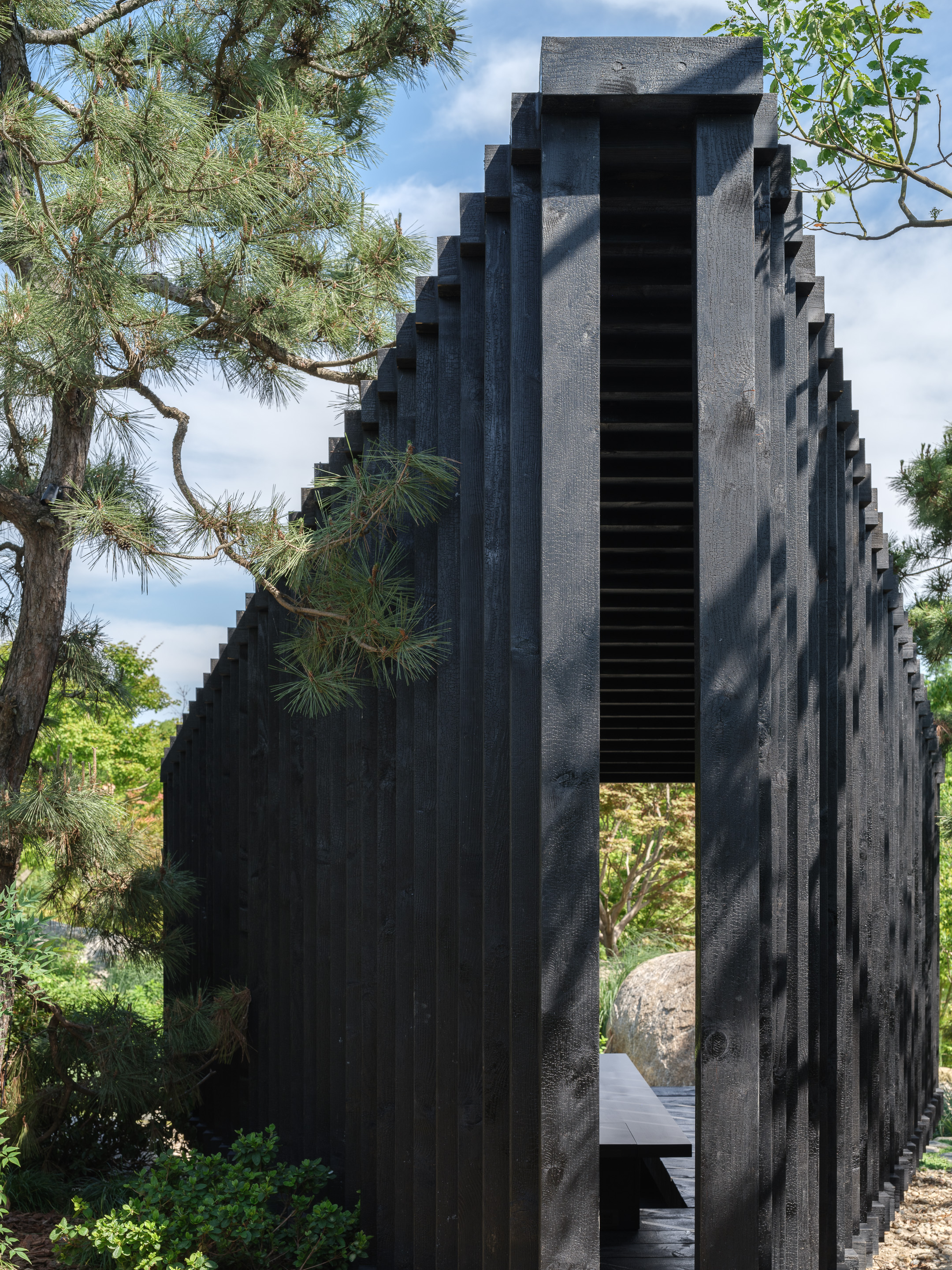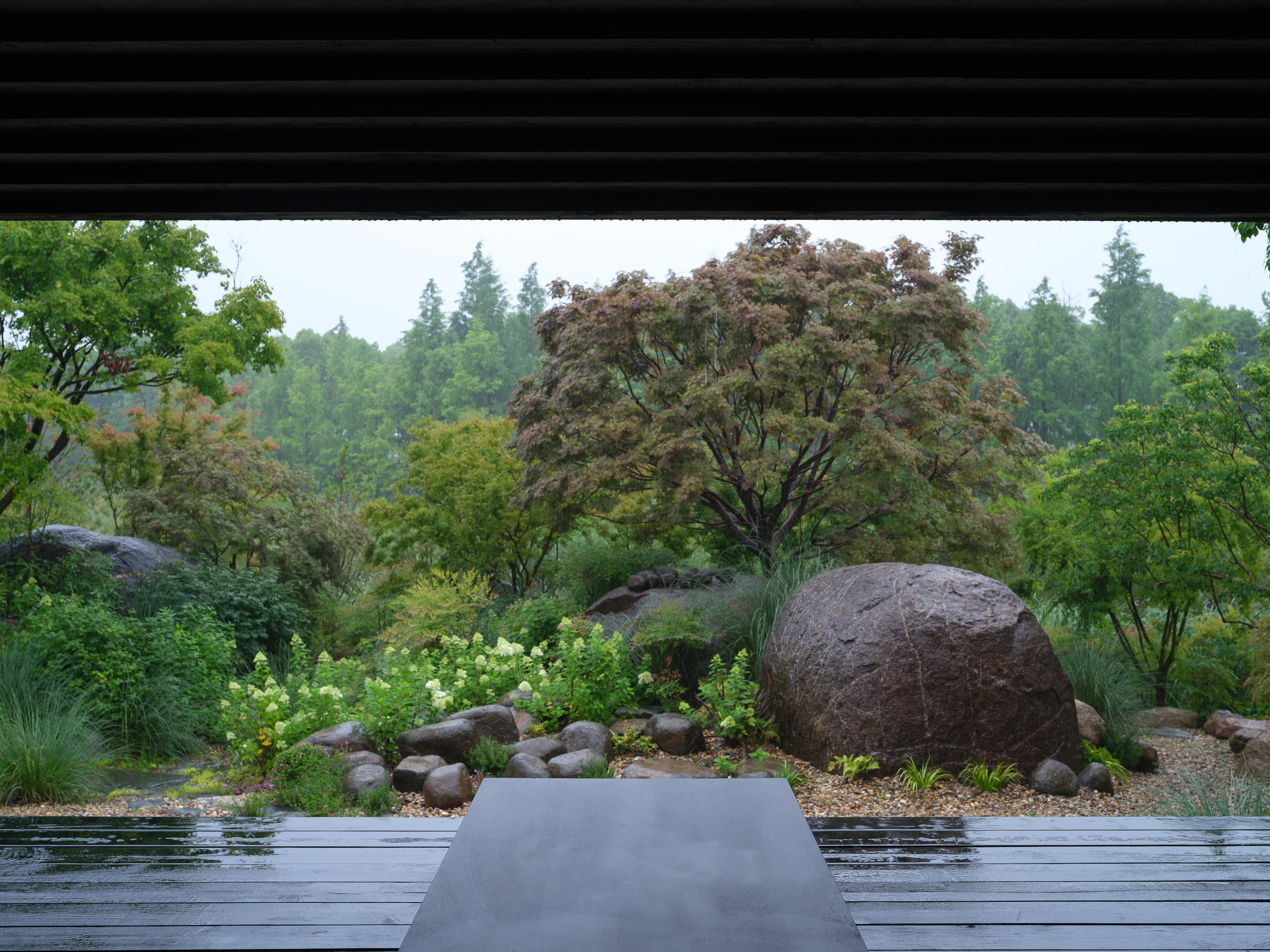3-To-1 PAVILION
SHANGHAI 2024
3-to-1
Pavilion is a contemporary wooden pavilion nestled in a lush garden setting in
Shanghai, designed as a serene sanctuary for tea drinking. This contemporary
structure embodies the interplay between time (时间), space (空间), and people (人间),
emphasizing the concept of 'in-between' or 'interstitial' spaces. The pavilion
serves as a place for tea ceremonies, contemplative rituals, and social
gatherings, encapsulating the essence of tranquility and self-reflection.
![]()
The pavilion's sleek, triangular form sits gracefully amidst trees, rocks, and water, metaphorically representing the interconnection of time, space, and people. Its shape provides a clear directional focus, guiding visitors on a journey from the casual gatherings to the contemplative. The design culminates in a narrow, tall opening that frames a view of the garden behind, creating a powerful visual connection with nature.
Progressive
Structure
From the exterior, the pavilion appears as a solid, mysterious form. Its structure consists of 30 incrementally changing rectangular frames, which create a gradual progression as one approaches and enters the space. The interior becomes narrower and taller, leading to the framed view of the pond beyond. This progression crafts a sequenced spatial narrative that mirrors the journey from the mundane to the contemplative, encouraging visitors to reflect and deepen their connection with the environment.

Triangle - Geometry
The pavilion's sleek, triangular form sits gracefully amidst trees, rocks, and water, metaphorically representing the interconnection of time, space, and people. Its shape provides a clear directional focus, guiding visitors on a journey from the casual gatherings to the contemplative. The design culminates in a narrow, tall opening that frames a view of the garden behind, creating a powerful visual connection with nature.
Progressive
Structure
From the exterior, the pavilion appears as a solid, mysterious form. Its structure consists of 30 incrementally changing rectangular frames, which create a gradual progression as one approaches and enters the space. The interior becomes narrower and taller, leading to the framed view of the pond beyond. This progression crafts a sequenced spatial narrative that mirrors the journey from the mundane to the contemplative, encouraging visitors to reflect and deepen their connection with the environment.
Light
Filter
Vertical
louvered columns form the pavilion's distinctive silhouette, acting as a
sophisticated filter for natural light. This design creates an ever-changing
interplay of shadows that evolve throughout the day and seasons, symbolizing
the passage of time and enhancing the meditative atmosphere of the space. The
subtle interaction between architecture and environment not only marks temporal
changes but also creates a serene tea experience.
Charred Wood - Material
Charred wood (employing the yakisugi technique) is not only aesthetically striking but also preserves the wood by carbonizing its surface to be water-resistant. The process of charring evokes notions of purification and renewal through fire in various cultures and beliefs, as its dark, textured appearance cultivates a somber, introspective atmosphere. The charred wood allows the structure to integrate harmoniously with its natural context while maintaining a distinct architectural presence, reinforcing the pavilion's role as a mediator between the built and natural environments.
3-to-1 Pavilion stands as a poetic architectural sanctuary, demonstrating how spaces can blur the boundaries between everyday life and contemplative ritual. By creating a deep sensory experience in connection to the surrounding environment, this structure invites visitors to pause, reflect, and engage in meaningful rituals. The pavilion showcases the potential of small-scale structures to profoundly impact our perception of space, time, and our place within the natural context.




















